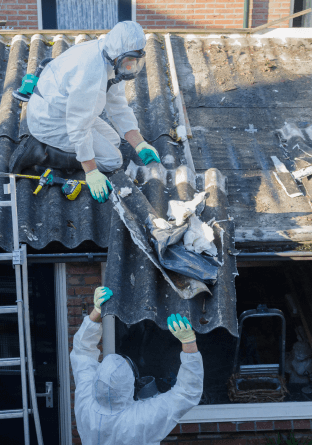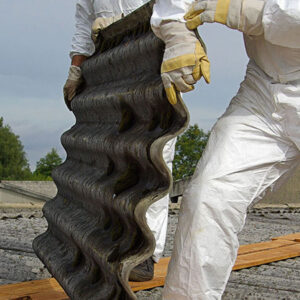Asbestos Roof Removal Case Studies Sydney Residential Asbestos Removal Services
Asbestos risk assessment is a crucial process for guaranteeing the security and health of people uncovered to this hazardous material. Asbestos, once commonly used in building and insulation products, poses severe health risks, including lung cancer, mesothelioma, and asbestosis. Given its widespread historic use, understanding asbestos risk assessment is important for owners, property managers, and building professionals.
The preliminary section of asbestos risk assessment usually involves identifying potential asbestos-containing materials (ACMs) in a building. This involves an intensive inspection, often carried out by licensed professionals educated in recognizing and sampling materials that may contain asbestos. Inspectors give attention to areas similar to insulation, ground tiles, textured paints, and roofing materials, which are historically known for asbestos use.
Impact Of Weather On Asbestos Roof Removal Residential Asbestos Removal Services

Once potential ACMs are recognized, samples are collected for laboratory evaluation. This step is essential since not all materials that look just like asbestos are actually harmful. The analysis is carried out to find out the presence and focus of asbestos fibers. These laboratory outcomes guide subsequent actions concerning management and abatement.
Risk assessment additionally includes evaluating the situation of any identified asbestos materials. Damaged or deteriorating ACMs are more hazardous because of the elevated likelihood of fiber release into the air. Professionals examine the extent of harm and the potential for exposure based mostly on the material’s location and situation. This assessment informs the danger level posed to occupants and employees in proximity to the recognized materials.
An integral a part of the assessment is considering the placement of the ACMs. Materials in high-traffic areas might present greater risk as a outcome of potential for disturbance. Likewise, materials utilized in ventilated spaces could launch more fibers if disturbed, rising the chance of inhalation. The evaluation additionally includes assessing who may be uncovered and under what circumstances they may come into contact with harmful asbestos fibers.
Handling Asbestos Shingles And Tiles Safely Residential Asbestos Removal Services
Determining the timeframe of exposure is one other key aspect of asbestos risk assessment. Short-term exposure may carry lower risks compared to long-term or repeated exposure. Although even temporary encounters with high levels of asbestos may be dangerous, understanding these nuances helps in accurately assessing the chance to individuals over time.
Recommendations are then fashioned based on the findings of the chance assessment. If the assessment identifies important hazards, options could include monitoring, encapsulation, or removal of the ACMs. Each option presents its personal set of issues, together with cost, disruption, and long-term safety.
Regular monitoring and periodic assessments might be essential in some instances. This is as a end result of situations in a building can change over time, potentially affecting the safety of ACMs. These ongoing evaluations make sure that any new risks are recognized promptly, allowing for quick corrective measures if essential.
Documentation plays a big function in asbestos risk assessment. All findings, recommendations, and actions taken should be meticulously recorded for legal and compliance reasons. Record-keeping provides a transparent history of the danger assessment process, which is important for informing future assessments and guaranteeing safety regulations are followed.
Post Asbestos Roof Removal Cleaning Find A Licensed Asbestos Removalist
Compliance with native and federal regulations is one other important consideration in the assessment process. Different jurisdictions could have specific laws governing asbestos handling and risk assessment. Stakeholders have to be conversant in and cling to these regulations to ensure the protection of public health and avoid potential legal penalties.
Public training about asbestos risks is vital as properly. Many individuals remain unaware of the dangers associated with asbestos exposure and the importance of correct assessments. Community awareness can encourage motion, encouraging property homeowners to conduct assessments and take needed precautions, thereby reducing the overall risk of exposure.
In conclusion, asbestos risk assessment is an essential practice for identifying and mitigating the risks posed by asbestos in varied environments. The process encompasses thorough inspections, laboratory evaluation, situation evaluations, and compliance with regulations. Through effective risk assessment, it's attainable to safeguard public health, making it crucial for owners and professionals alike to prioritize these evaluations in properties potentially containing asbestos.
How To Prepare For Asbestos Roof Removal Safe, Reliable And Experienced Removal Services
- Identification of asbestos-containing materials (ACMs) in buildings via thorough inspections and sampling techniques.
- Evaluation of the situation and extent of injury to ACMs, contributing to understanding the urgency of risk management.
- Assessment of exposure risks for numerous occupation groups working in or near asbestos sites, including maintenance and development personnel.
- Implementation of legal and regulatory requirements, making certain adherence to local and national safety requirements concerning asbestos handling.
- Development of a tailor-made asbestos management plan, outlining steps for monitoring, maintenance, and potential removal of ACMs.
- Training and teaching programs for employees on asbestos hazards and safe work practices to attenuate exposure.
- Regular re-evaluations of asbestos conditions to account for changes in the building environment or occupancy ranges.
- Use of risk communication strategies to tell stakeholders about asbestos presence, risks, and management actions.
- Collaboration with health professionals to watch any health effects on staff probably exposed to asbestos fibers.
- Establishment of emergency response plans for asbestos-related incidents to effectively manage pop over to this web-site exposure risks and he said guarantee safety.
What is asbestos risk assessment?
Asbestos risk assessment is the method of evaluating the potential hazards posed by asbestos materials in a building. This assessment helps identify the presence of asbestos, evaluate its situation, and decide the level of risk to occupants and workers, guiding essential actions for management or removal.
Why is an asbestos risk assessment necessary?
Best Practices For Asbestos Roof Removal In Sydney How To Get Your Roof Replaced For Under 1000
An asbestos risk assessment is crucial to guard the health and safety of individuals who may be uncovered to asbestos fibers - Consultation Services For Asbestos Roof Removal. It helps identify areas the place asbestos is present, assess the risk of exposure, and implement appropriate management measures to mitigate these risks, making certain compliance with legal regulations
How often ought to an asbestos risk assessment be conducted?

It is recommended to conduct an asbestos risk assessment every three years or each time vital changes happen in the building environment, corresponding to renovations or modifications in occupancy. Regular reassessment ensures that any changes in asbestos situation or risk exposure are promptly identified and addressed.
Who ought to conduct the asbestos risk assessment? (Asbestos Roof Removal Health Risks)
Environmentally Friendly Practices For Asbestos Disposal Hazardous Materials & Disposal Services
The assessment should be carried out by a qualified and licensed asbestos professional with expertise in identifying and managing asbestos-containing materials. This ensures that the assessment is thorough, correct, and compliant with local regulations and safety guidelines.

What occurs if asbestos is discovered through the risk assessment?
If asbestos is discovered, the certified professional will advise on one of the best course of action, which can embrace leaving it undisturbed if it is in good condition, encapsulating it, or safely eradicating it. Ongoing monitoring and management plans will sometimes be established to make sure safety.
Can I carry out an asbestos risk assessment myself? - Asbestos Roof Removal Permits In Sydney
Using Technology In Asbestos Roof Removal Asbestos Storm Damage Services
While some preliminary assessments can be made by people who are educated about asbestos, it is strongly really helpful to hire a licensed professional for a complete risk assessment. Professionals have the right training and tools to precisely identify and evaluate asbestos risks.
What are the potential health risks of asbestos exposure?
Asbestos exposure can lead to severe health issues, including asbestosis, lung most cancers, and mesothelioma. These circumstances usually develop after prolonged exposure, making it essential to evaluate and manage asbestos risks diligently to protect public health.
Asbestos Roof Removal Checklist For Homeowners Cost To Remove Asbestos Garage
Are there regulations relating to asbestos risk assessments?
Yes, many international locations have specific regulations governing asbestos management, including the requirement for normal risk assessments in industrial buildings and certain residential structures. Compliance with these regulations is obligatory to make sure safety and keep away from legal repercussions.
What should I do if I suspect asbestos in my home?
Environmental Restoration After Asbestos Removal Asbestos Storm Damage Services
If you believe you studied the presence of asbestos in your home, do not disturb the material. Contact a licensed asbestos professional to conduct a risk assessment and determine one of the best plan of action to administer or remove the asbestos safely.